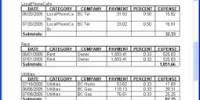Market segmentation means dividing a market into smaller groups of buyers with distinct needs, characteristics, or behaviors who might require separate products or marketing mixes. It splits up a market into different types (segments) to enable a business to better target its products to the relevant customers.
Conditions for effective market segmentation
A sound marketing program starts with identifying the differences that exist within a market – called market segmentation. To be sound and effective, market segments must fulfill the following conditions:
Measurable
Market segments must be measurable. With obtained data, the size of segment purchasing power and profiles of the customers can easily be measured. Reliable market research should be able to identify the size of a market segment to a reasonable degree of accuracy, so that strategists can then decide whether, how, and to what extent they should focus their efforts on marketing to this segment.
Accessible
Market segments should be accessible through existing marketing institutions- a middleman, advertising media, company’s sales forces with a minimum cost and wasted effort. When demarcating a market segment, it is important to consider how the group might be accessed and, crucially, whether this falls within the strengths and abilities of the company’s marketing department.
Substantial
Each segment should be large enough to be profitable. By this concept, management could treat every single customer as a separate segment. A viable market segment is usually a homogenous group with clearly defined characteristics such as age group, socio-economic background, and brand perception. Longevity is also important here: no market segmentation expert would recommend focusing on an unstable customer group that is likely to disperse or changes beyond recognition within a year or two.
Differentiable
Market segments are conceptually distinguishable and respond differently to different marketing mixes and programs. Differences between market segments should be clearly defined so that the campaigns, products and marketing tools applied to them can be implemented without overlap.
Actionable
It is not possible for a company to serve all the market segments. so the company must have to design an effective marketing program for attracting and serving most suitable segments. The market segment must have practical value – its characteristics must provide supporting data for a marketing position or sales approach, and this, in turn, must have outcomes that are easily quantified, ideally in relation to the existing measurements of the market segment as defined by initial market research.
Information Source:
















